John Norris
On grey leafless branches of silk cotton trees, brilliant red blossoms lift the spirit
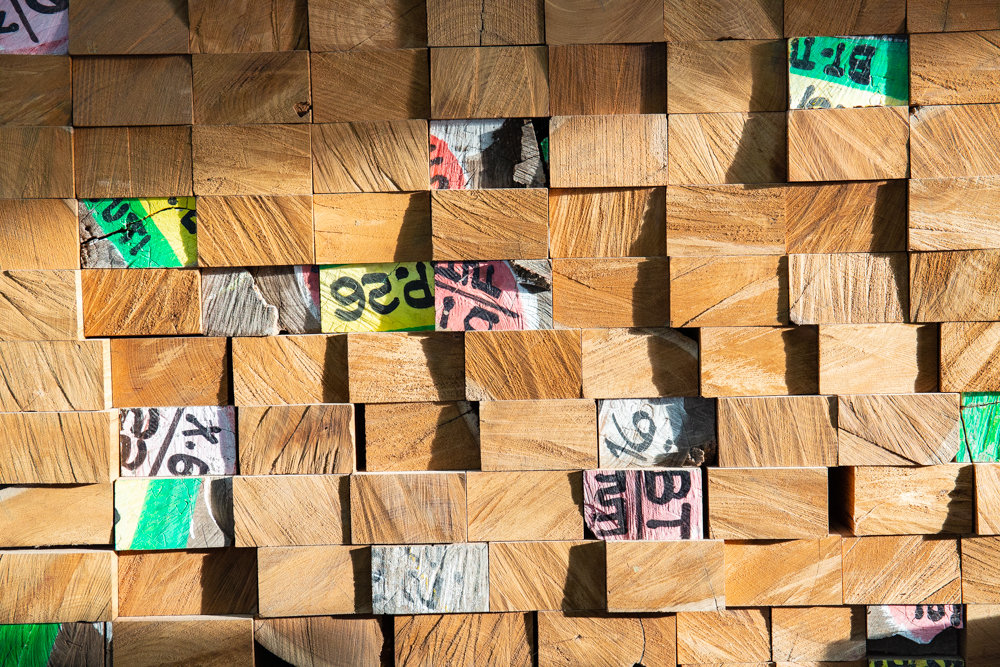
Famed for its beautiful temples and architecture, food and classical Indian dance, the South Indian state of Tamil Nadu is a wonder in colorful ornamentation, crafts and people. For our new website magazine, we asked John Norris, an acclaimed photographer and a good friend of ours, to share some insights and images from his trip with designer Boris Berlin and Ca’lyah founder Nigel Majakari. The full essay will be online in early March – until then, enjoy a glimpse into the world of our collaborators and friends.
For more than 30 years, John Norris has had an emphasis on outdoor adventure in his career as a professional photographer. His camera has accompanied him on various international travels for commercial clients and photography for publications. With a lens focused on nature, people and travel, we found him to be the ideal match to document and tell our story through photography on-site in India. We are pleased to share a curated selection of his images from our shared trip – which not only shows his look at people, but his personal lifelong passion for woodwork as well.

Flowers
The Ca’lyah project has roots in the earth of Tamil Nadu and designer Boris Berlin draws inspiration from among other things the patterns and forms of flowers found there. When I recall this part of India the first thing that comes to my mind is the ubiquity of flowers. Even in the more run-down dusty suburbs of Chennai you will at times find, on the grey leafless branches of silk cotton trees, brilliant red blossoms to lift the spirit. Fresh flowers decorate temples, shrines, buses and motorcycles. Strings of flowers adorn the long dark plaits of gleaming hair the women and girls wear. Above all, fresh flowers are painstakingly arranged in the so-called decorative ‘uruli’ bowls set in the water, their fragrance blessing the early morning air.
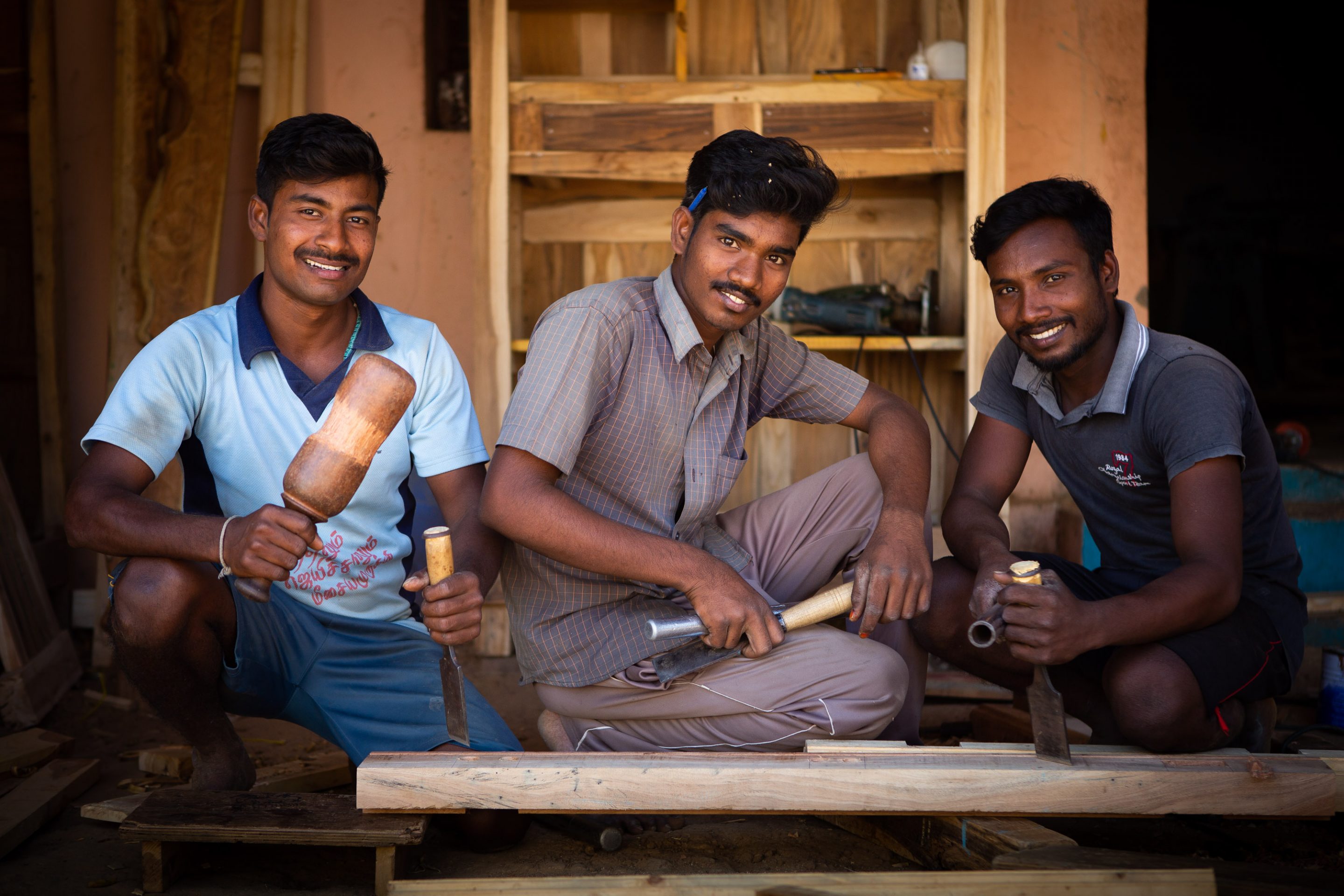
The Three Young Craftsmen
I enjoyed watching the evident camaraderie between these three young woodworkers in their workplace. The wide world over that kind of exchange can, at times, be reason enough to go to work. Its importance is, I think, very much set apart from relationships drawn through family or other social friendships. This workshop was set in the countryside and as I watched the young men handling their tools with an enjoyment and casual ease. I hoped they would find ways to get ahead in life without having to permanently leave the village community or entirely abandoning these valuable hand crafting skills.
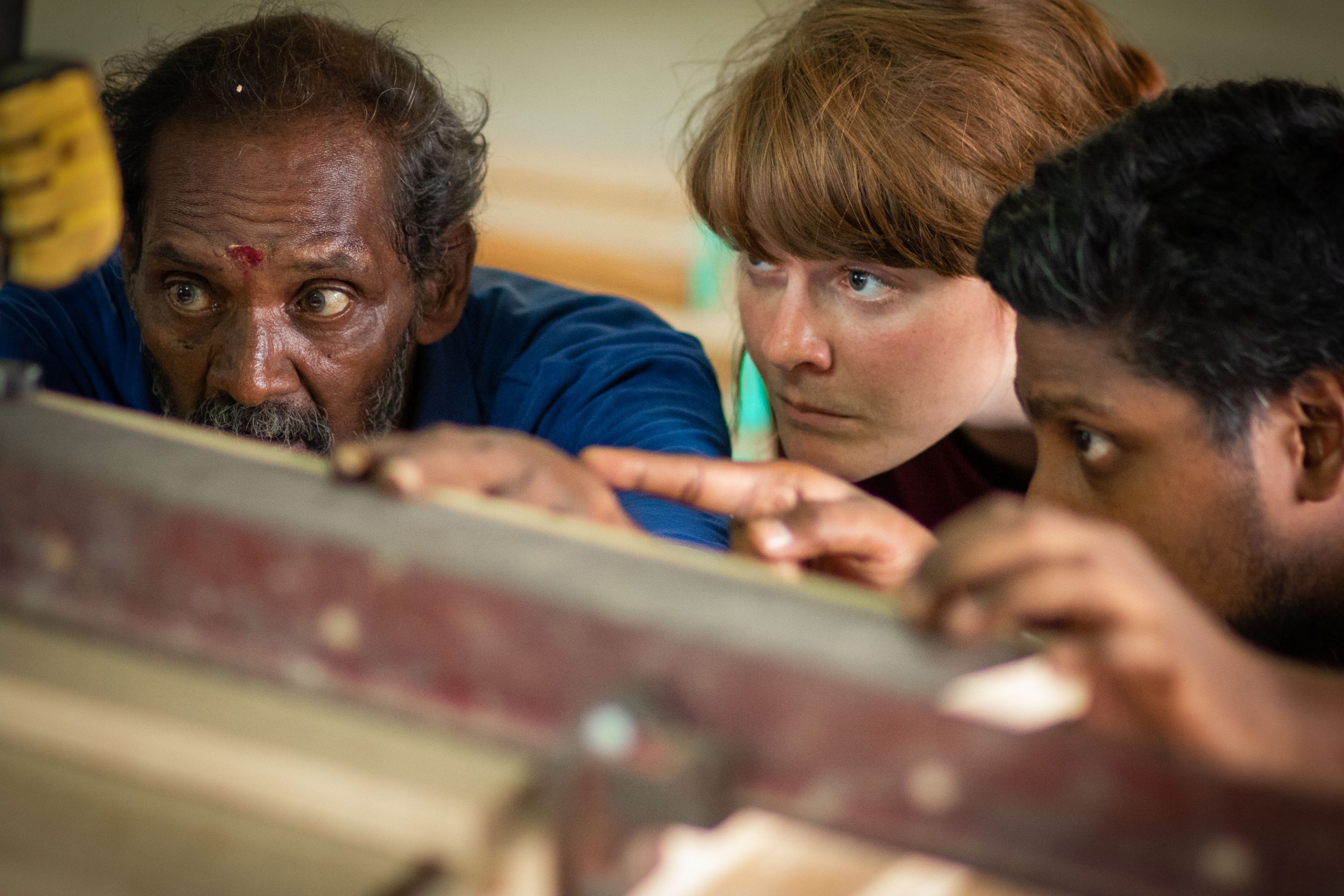
Eyes on the prize
The prize? An elusive excellence perhaps, or maybe in this captured moment simply a level of accuracy. I had been working in this Chennai factory for a week following the efforts of Ca’lyah to bring people from several disparate backgrounds together in order to create something unique and exceptional. I would watch everyone in the workshop struggle to overcome the challenges of communication and culture and seemingly insurmountable logistical challenges. Through this I had also seen them forge an unusual bond. This photograph shows Ganeshan, a local craftsman with Sofie who was trained in a celebrated state-of-the-art furniture workshop in her native Denmark. The third face is that of Karthik who used his language skills and great good humour to help nurture this collaboration. When I saw the three of them together, all utterly engrossed in the Ca’lyah project it felt like a special and hopeful moment.
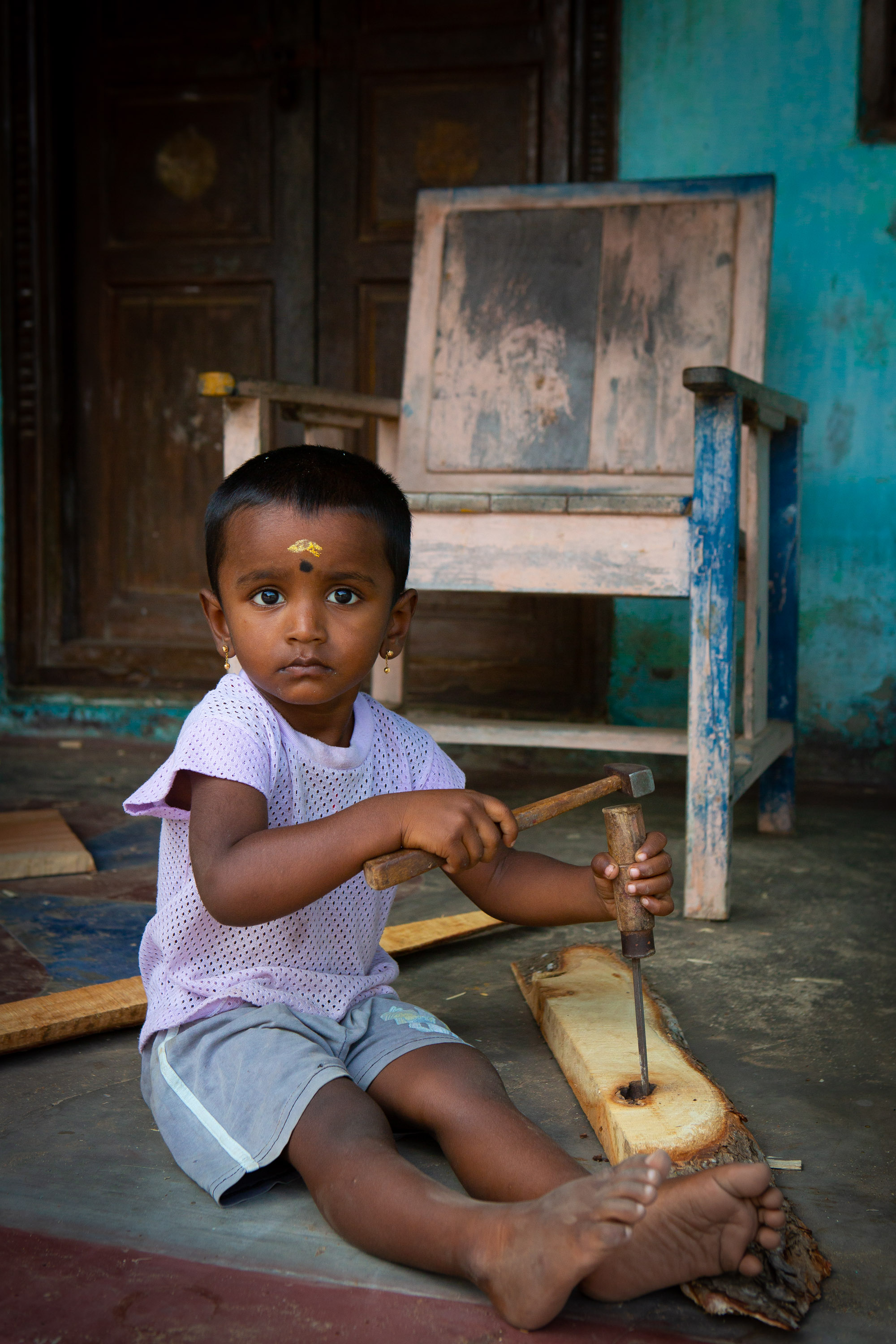
The Grandson
This little boy is the grandson of an elderly carpenter who was working next to him. It wasn’t posed; the boy was busy tapping away on his chisel and looked briefly across at me with this intense gaze and then turned back to his endeavours. I loved the fact that at such a young age, under the watchful eye of his grandfather, he was playing with real tools and at the same time learning. The wonderful patinated chair behind him may well have been made right where he was growing up, perhaps years ago by the old man now proudly watching over him.
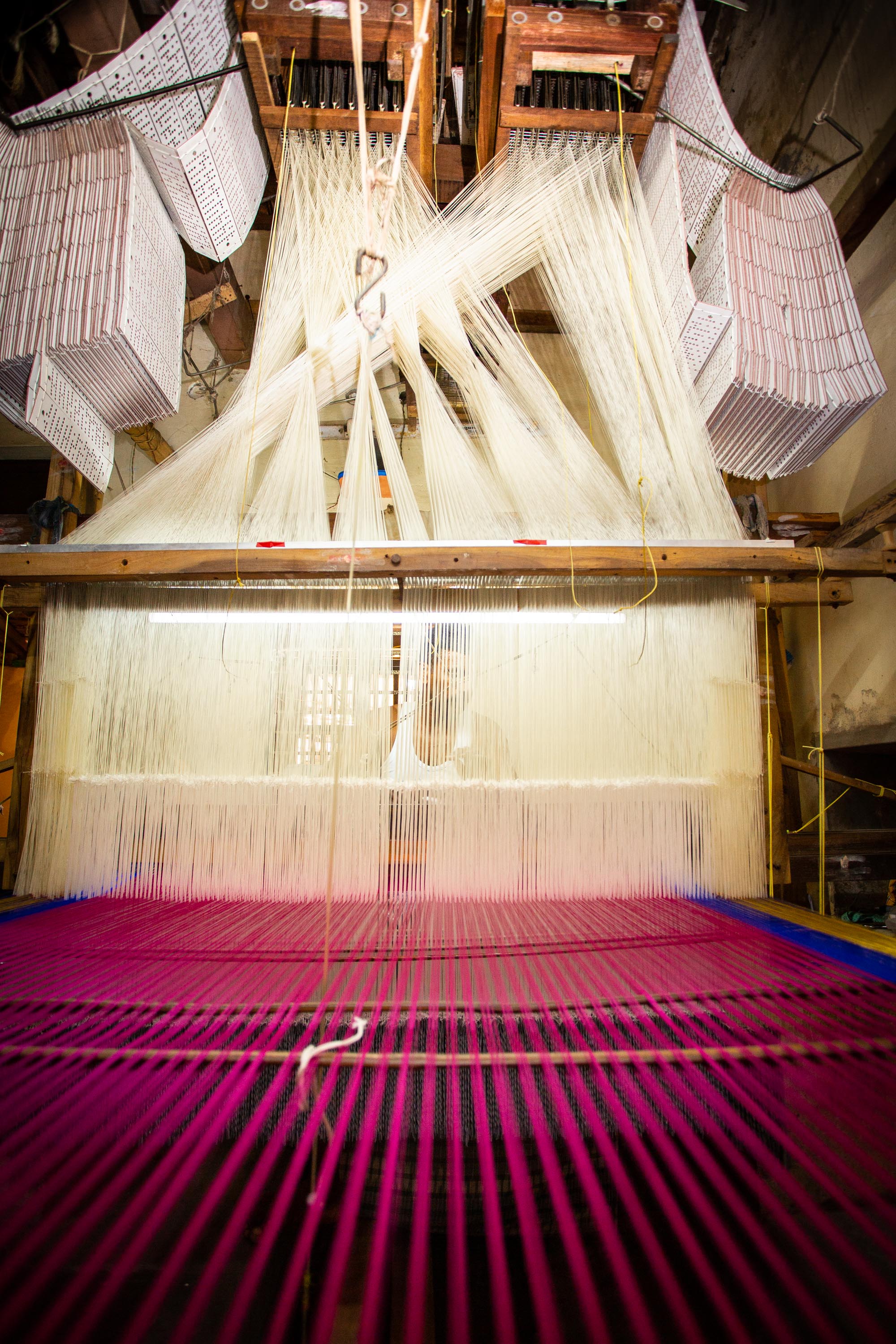
The Loom and the Luddites
This is a version of a jacquard loom, invented over 200 years ago in France. It looks wonderfully antiquated now, but it’s punch card technology at the time was radical. So much so that the automation it introduced and the resultant threat to jobs instigated huge protests by a movement in the textile industry of the time who were known as Luddites. Their name today of course has become synonymous with anyone resisting new technology. It is ironic perhaps, that today these looms can now be found squeezed into impossibly small rooms in rural homes where weavers work alone hand crafting the most amazing silk pattered fabrics their wonderful secrets preserved in the fading punch cards suspended above them. So, the dilemma continues: How much should we automate and embrace the benefits of new technology and to what extent retain old skills, crafts, materials and tools?
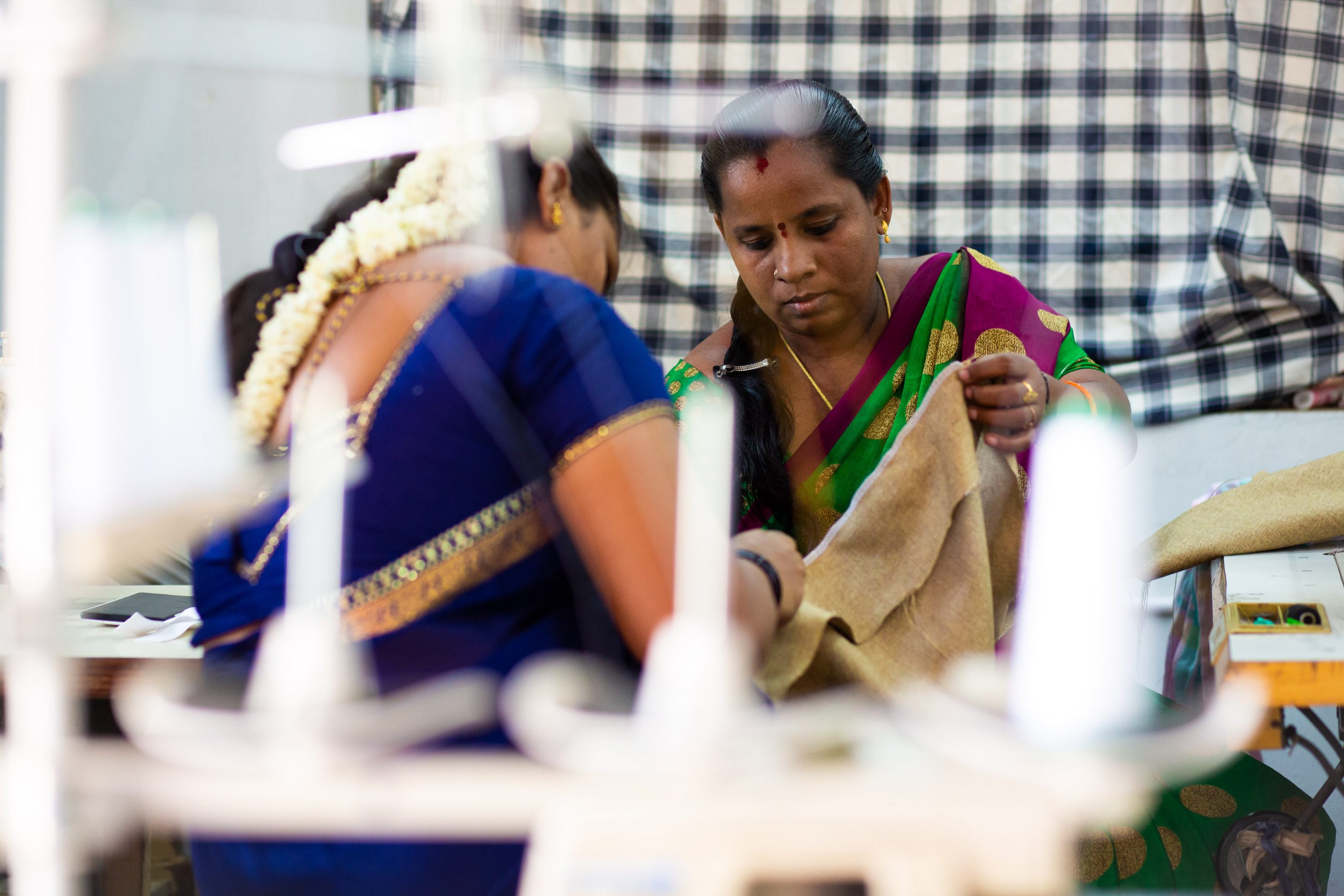
The Sewing Ladies
Working with Ca’lyah in Chennai gave me a unique opportunity to meet local people in their places of work. I spent a couple of hours watching these two ladies expertly cutting and sewing various fabrics for their customers. The whole time they were chatting away and would occasionally begin laughing at some internal joke. It was in the full heat of midday, as we waited for a lift back to the factory, that one of the ladies thought I looked tired. She laid some fabric out on the spotless floor beneath a sewing table and gestured for me to lie down and rest. When I woke up later, she said something to me in Tamil which her boss translated: “She says that is where her young son sleeps after school while she finishes her days work”. I turned back to her and she was giving me the warmest of smiles. It is the memories of these random small kindnesses I’ve experienced when travelling that linger years after returning home.
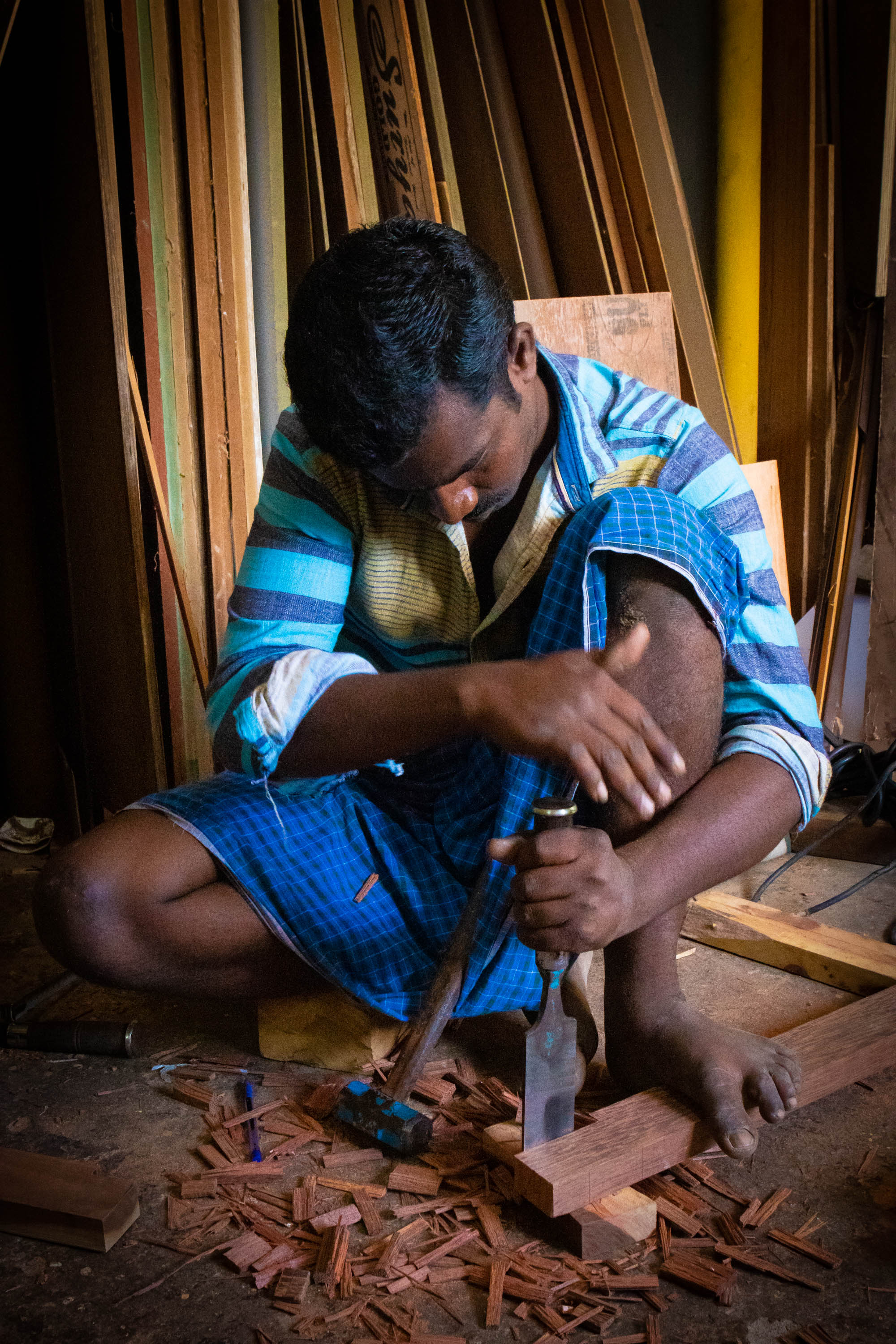
Craftsman in Blue
Perhaps it’s because I myself am an avid woodworker that the sight of this craftsman, lost in his work, resonates with me. When I look at the image, I can almost feel the chisel cutting across the grain, hear the rasping sound that action makes and smell the timber-filled room in which he works and I relate to the intensity of his concentration. Where my experience differs is that he holds the wood, not with a metal vice as I might, but with the flesh and muscle of a dexterous foot. As a photographer how could I not be drawn in by the vibrant blue shades, the shine of his dark hair and rich skin colour all gently lit by diffused daylight from a dusty side window.
